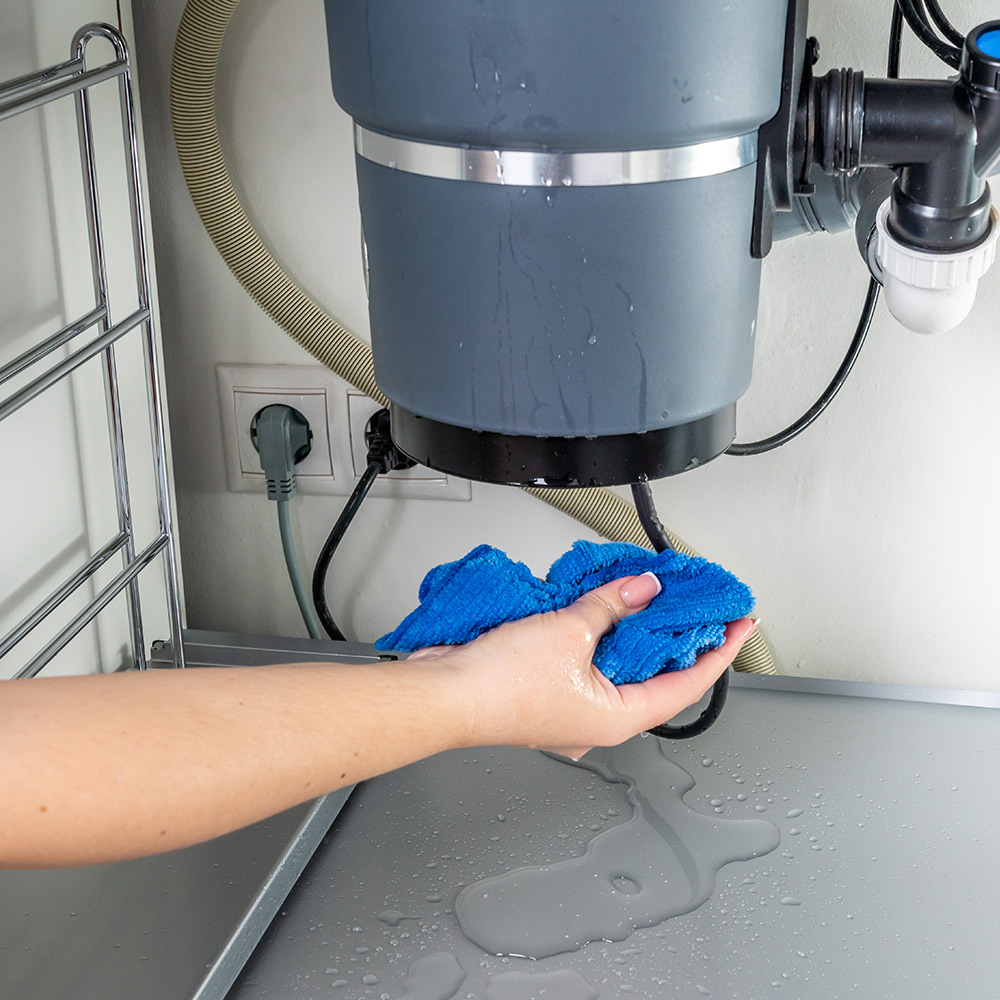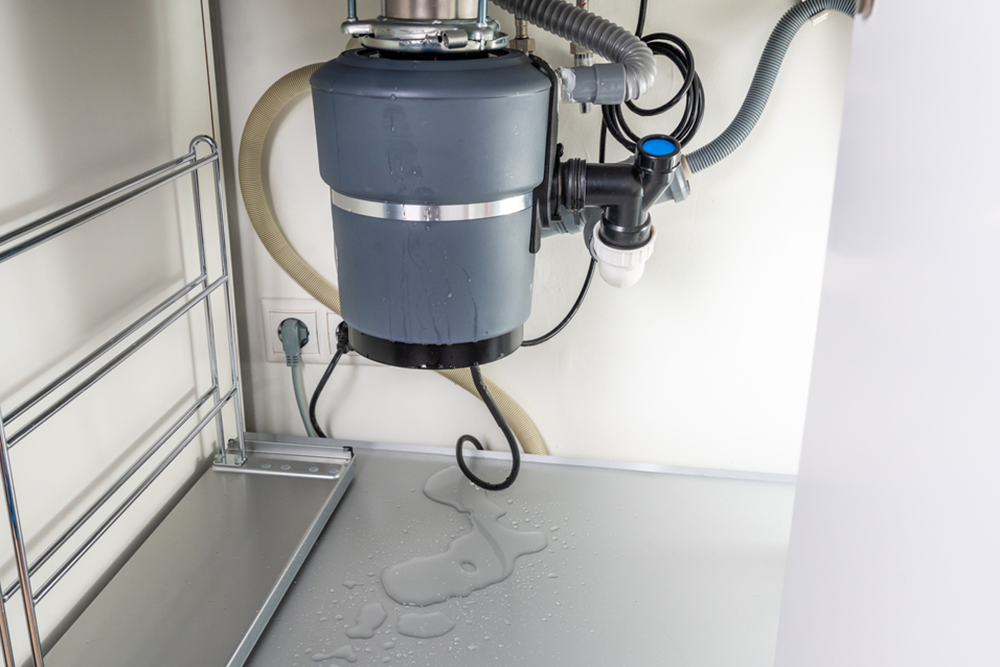They are making several good annotation relating to Tips on Fixing a Leaking Garbage Disposal as a whole in this article down below.

Waste disposal unit are essential kitchen area home appliances that aid in getting rid of food waste successfully. Nonetheless, a leaking garbage disposal can be an aggravating and untidy trouble to take care of. The good news is, lots of leakages can be fixed conveniently with a couple of straightforward steps. In this short article, we will review how to take care of a leaking waste disposal unit efficiently.
Introduction
Garbage disposals are set up under kitchen sinks and are made to shred food waste right into smaller items, allowing it to travel through the plumbing system quickly. While these tools are normally dependable, leakages can take place over time as a result of damage, loose connections, or damages to the device.
Step-by-Step Guide to Taking Care Of a Dripping Waste Disposal Unit
Shut off the Power
Prior to trying any kind of repairs, guarantee that the power to the garbage disposal system is shut off to stop the threat of electrical shock.
Situate the Leakage
Recognize the specific location of the leakage and establish the reason
Tighten up Connections
Utilize a wrench to tighten any loose links between the disposal unit and the plumbing system.
Change Seals or Gaskets
If the leakage is due to worn seals or gaskets, eliminate the old components and change them with brand-new ones.
Patching Fractures or Holes
For cracks or openings in the disposal unit, usage epoxy or an appropriate patching material to secure the broken location.
Recognizing the Source of the Leakage
Before attempting to deal with a dripping garbage disposal, it is necessary to determine the resource of the leak. This can usually be done with visual inspection or by conducting straightforward tests.
Visual Evaluation
Evaluate the garbage disposal system thoroughly for any indicators of water leakage. Pay close attention to areas around seals, gaskets, and connection factors.
Evaluating for Leaks
One means to test for leaks is by running water with the disposal system and looking for any type of noticeable indicators of leak.
Usual Sources Of Leakages in Garbage Disposals
Worn Seals and Gaskets
Seals and gaskets play an important function in preventing water from dripping out of the waste disposal unit. Gradually, these elements can weaken, resulting in leaks around the disposal device.
Loose Links
The connections in between the waste disposal unit and the pipes system can end up being loose with time, creating water to leakage out during operation.
Splits or Openings in the Disposal System
Physical damage to the garbage disposal, such as splits or openings in the real estate, can likewise result in leaks.
Tools and Materials Needed for Taking Care Of a Leaking Garbage Disposal
Before starting the repair service procedure, gather the needed devices and materials, consisting of a screwdriver, flexible wrench, plumbing's putty, replacement seals or gaskets, and epoxy or patching product for repairing fractures or openings.
Examining the Garbage Disposal After Repair Work
When the fixing is full, evaluate the waste disposal unit by running water via it to make sure that the leak has actually been fixed.
Preventive Maintenance Tips to Stay Clear Of Future Leakages
To stop future leaks, it is vital to do regular upkeep on your waste disposal unit. This includes maintaining it tidy, avoiding putting non-food products or hard objects down the disposal, and periodically looking for leaks or other concerns.
Final thought
Finally, repairing a dripping garbage disposal is a relatively simple procedure that can be completed with basic tools and materials. By adhering to the steps detailed in this short article and exercising preventative upkeep, you can maintain your waste disposal unit in good working condition and avoid costly fixings in the future.
HERE’S HOW TO FIX YOUR GARBAGE DISPOSAL
WHAT TO DO IF SOMETHING IS STUCK IN YOUR GARBAGE DISPOSAL
If the impeller won’t turn, there’s probably something stuck in the disposal. It could be a steak bone or peach pit, although plumbers report pulling all sorts of inappropriate objects out of disposals, such as bottle caps or aluminum foil. Make sure power to the disposal is off, and look inside to see if you can see the source of the jam.
Never stick your fingers in a disposal. Pull out anything you see with tongs or pliers.
If the disposal still won’t work, it may be time to call a plumber or consider buying a new disposal. GEM Plumbing & Heating is here for all of your garbage disposal needs.
WHAT TO DO IF YOUR GARBAGE DISPOSAL DRAIN IS CLOGGED
Take everything out from underneath your sink and put a bucket or other container under your disposal to catch any water that drains out. Disconnect your disposal from the power supply. If it’s plugged into a wall outlet, unplug it. If it’s hardwired into an electrical box, go to the electrical panel and turn off the breaker for the disposal. Pour ¼ cup of baking soda into the drain, followed by ½ cup of white vinegar. Give the solution a few minutes to fizz and do its work. Look into the disposal with a flashlight to see if you can see an object that might be causing the clog. If you see it, remove it using tongs or pliers. MORE TIPS ON DEALING WITH A CLOGGED GARBAGE DISPOSAL
Never use drain cleaner in a garbage disposal. It can damage the plastic parts inside the disposal. You can also be splashed with the caustic liquid while working to clear the clog. Beware! Never stick your fingers into a garbage disposal. Trust us — not a good idea. In many instances, your dishwasher drains through your garbage disposal. This allows the disposal to grind any large food particles that may be drained out of your dishwasher. There are some jurisdictions, however, where the plumbing code prohibits such a connection. WHAT TO DO WHEN YOUR DISHWASHER DRAINS THROUGH THE DISPOSAL
Run some water in the sink so your plunger has at least a ½-inch of water to create a seal and plunge vigorously up and down several times. You may need to repeat this several times. Run hot water down the drain to clear any residue that remains.

Do you like reading up on Why Is ? Make a remark below. We'd be interested to listen to your suggestions about this piece. Hoping that you come back again in the future. So long as you enjoyed reading our post plz make sure you remember to pass it around. Thanks for your time. Come back soon.
Call Today